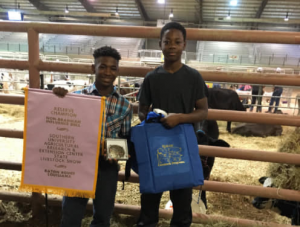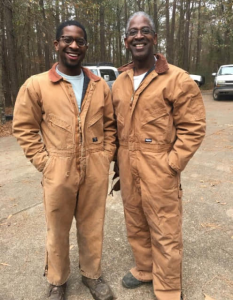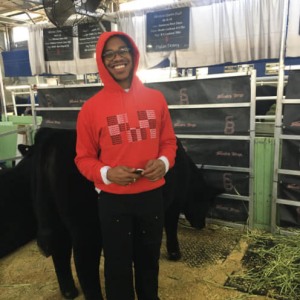February is Black History Month, and there are some amazing black farmers to highlight across social media. While farmers make up less than 2 percent of the population, farmers of color are a fraction of the fraction: a minority of the general public. Here is the story of one of those farms.
The McFarland family from Flying Eagle Ranch in Louisiana includes Regina and Marius McFarland and their four grown children: Daniel McFarland (d_mac5 on Instagram), his brother Isaac (@ablackfarmer), and two other siblings, Hope and Adam (@uronlyhope_ and @mac_i_am). Daniel talks about how proud he was to grow up on the farm, where they all started showing cattle as early as 6 or 7 years old. Their father wanted to make sure his kids had a better life than he did, while instilling a strong work ethic and creating opportunities in a farm life consisting of cattle, chickens, hogs, and hay.

Daniel lights up when he talks about life lessons gleaned through showing cattle. He was heavily involved in Louisiana parish, state, and national cattle shows like the National Western Cattle Show, the Beefmaster Breeders United, and Southern Livestock Show. In 2012 he became the first black man on the board of directors for the National Junior Angus Association, an honor that conjured a lot of wonderful emotions from his very proud father.

It became quite commonplace for the McFarlands to be the only family of color at national shows, but Daniel takes it as a unique opportunity to eliminate the notion of what a farmer “looks like.” He wishes more individuals had the opportunity to live this life, and his father invites kids from their church to the farm to enable young black students the opportunity to work in the outdoors in agriculture, where they may not have otherwise gotten that chance. They’ve earned numerous awards, including the Supreme Champion Heifer at the Southern University State Livestock Show, which was won by Isaac when he was just 8 years old.
But that’s not all. Isaac started a “Learning with a Black Farmer” video series, where he shows different parts of farming as they realized a lot of people have no idea what it all entails. From showing to chutes, his advocacy efforts allowed him to be discovered by American Eagle, where he now models for them as a face in their stores all around the world. He’s come a long from his Muck Boot days, where he famously earned the name “boots” from his peers for always showing cattle in his favorite pair.
Despite the fact that the family farm is a side business to their full time careers (their father is a physician; Daniel, a healthcare administrator in Baltimore), Daniel dreams of someday making a life for himself back on the farm to instill those family farm values onto the next generation. He feels it’s his responsibility to carry that on, and wouldn’t have it any other way.
“Growing up on a farm has monumental skills to be successful,” he shares. “Farmers can be anything! Doctors, lawyers, politicians, anything! I may wear a suit everyday, but I know what hard work on a farm looks like.”
Indeed, advocating for agriculture can be hands on or done more indirectly through other career and educational efforts.
He wants people to be excited about agriculture and explains how his college education was affordable and partially funded by scholarship opportunities through different groups like the National Junior Angus Association. “People don’t always tap into this because they don’t always know about it. But because of my involvement and previous experience, I was given an underrepresented opportunity for individuals of color to make a difference. I want to give back to the organizations that gave so much to me.”

Michelle Miller, the Farm Babe, is an Iowa-based farmer, public speaker, and writer, who lives and works with her boyfriend on their farm, which consists of row crops, beef cattle, and sheep. She believes education is key in bridging the gap between farmers and consumers.



